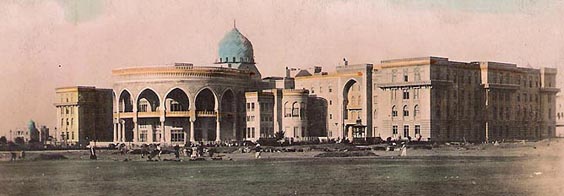The ancient Egyptian religion only died when Christianity came into the ascendant with the emperor Constantine under the Roman Empire.
The Sun god, Ra, woke up, stretched, had a cup of fine Ethiopian coffee, and climbed up out of the Red Sea to begin his daily stroll across the skies of ancient Egypt. He smiled warmly at the already ancient city of Iunu (the place of pillars), which the Hebrews called On(pain, force, iniquity), and which, when Alexander arrived, would become known as Heliopolis (the city of the Sun). The site is located about 10 km. north of modern Cairo, Egypt, just west of the modern suburb of Al-Matariyah. Nothing much remains of it today except a beautiful granite obelisk, and the crumbling, half-buried remains of the old city walls. Many of the old stones were hauled away to build the medieval city of Cairo, and can still be seen there in the walls of the city.
Astrologer-Priests Develop Mathematics
Heliopolis was founded in the predynastic period – some time before 3100 B.C. – and reached its zenith during the 4th and 5th Dynasties, about 2500 B.C., during the time the great pyramids were being built. It was the city of the priests of Ra. Because theirs was the cult of the Sun, these priests studied the heavens. They were astrologers and the chief among them was the Great Seer. Their observations of the heavens required that they develop mathematics, and with this art came power. They predicted the great seasonal floods of the Nile, upon which Egyptian agriculture was based, by calculating the heliacal rising of Sirius, and they surveyed the land each year to reestablish the boundaries. These priests became the architects and engineers of Egypt and designed the pyramids. They were the scribes and accountants of the land, and by controlling the distribution of wheat, acquired great social and political power. At the close of the 4th Dynasty they replaced the Pharaoh as the rulers of the land; prior to this the Pharaoh was considered to be divine, the incarnation of the god in fashion at the time. These priests gave lasting gifts to science and religion, gifts that live still.
Conquests and Death of the City
The Persians were the first of the foreigners to invade and conquer Egypt. In 525 B.C., they razed Heliopolis, both to destroy the power of the priests and to take a strategic position for entering into the south of the land where the wealth of Egypt, in the form of wheat, was grown. From that time until 1952 A.D., Egypt was continuously under the heel of one foreign power after another. In 332 B.C. Alexander and the Greeks came, and with the arrival of the Greeks the center of power and trade moved to Alexandria and Heliopolis slowly faded away. Plato and other well-known Greek philosophers studied at Heliopolis for a time. The Romans took the land in 30 B.C., and by about 33 A.D. Christianity took a seat at Alexandria. Then, about 325, when the emperor Constantine made Christianity the official or accepted religion of the Roman Empire, the old Egyptian cult of the sun died out, and Heliopolis withered away. Now Heliopolis is no more. All that remains is a single obelisk, pointing skyward at the noonday sun.








